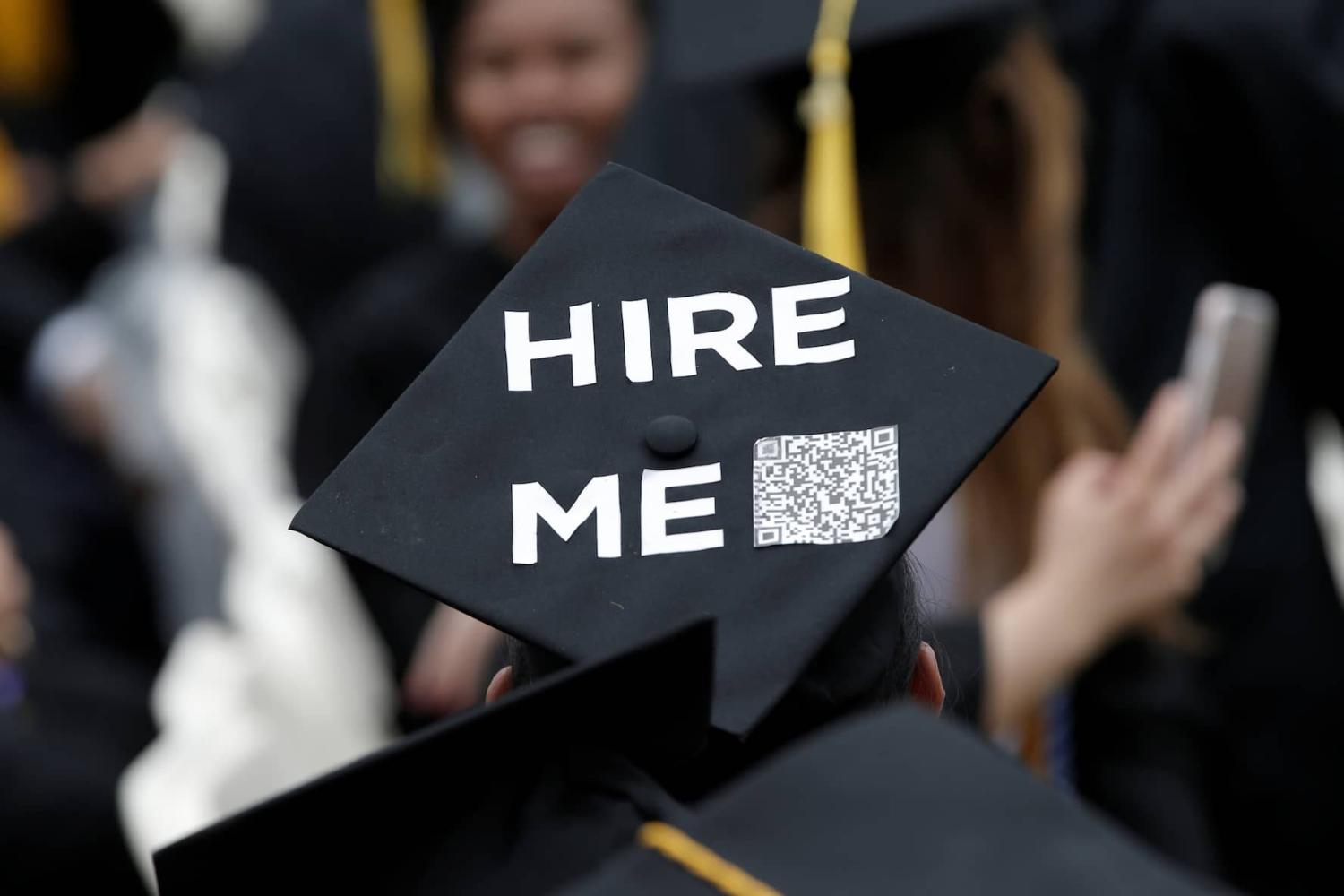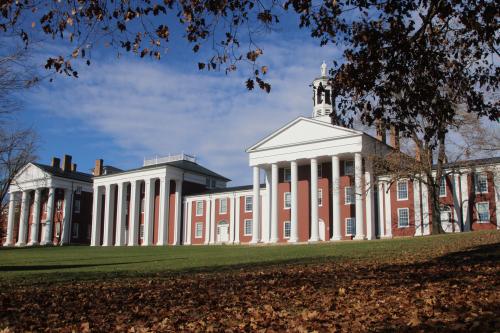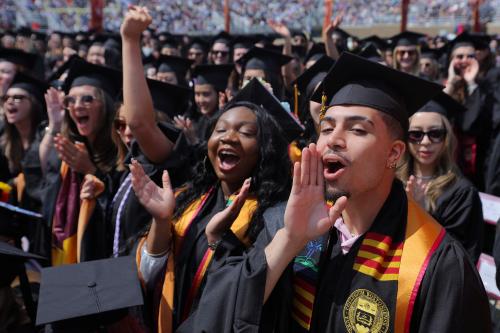A college education is sometimes described as an elevator of social mobility, as it can open new professional and social opportunities that otherwise may be out of reach for many students. Yet, not all students get the same benefit from college. Why do some students’ elevators get stuck going up just a couple of floors while others can ride their elevators to unimaginable heights? And do just the most affluent students get rides to the top from their college experience, as some have previously argued?
In this post, I take a look at how participation in college majors is associated with social inequality. Specifically, I compare after-graduation earnings of students on Pell grants (a common proxy for coming from a low-income family) versus earnings of other college students receiving federal assistance (mostly loans). I then calculate how much less students earn if they major in subjects where Pell grant recipients are particularly concentrated. The short answer is that Pell recipients are concentrated in majors that lead to lower earnings after graduation for both Pell grant and non-Pell grant recipients. As an example, only about 38% of the majors in “Pharmacy, Pharmaceutical Sciences, and Administration” are Pell recipients and the average earnings coming out of this major is $109,000 a year. In contrast, 81% of “Human Services, General” majors are Pell recipients and average earnings are $44,000.
Thus, a student’s choice of major while in college is an underappreciated arbiter of social mobility, and universities should be doing more to ensure students do not face undue barriers in these choices.
Major choice and later earnings
It will surprise no one to learn that some college majors pay better than others: In particular, STEM majors earn significantly more over their careers. Additionally, earnings differentials across majors have increased substantially in recent decades. Part of the STEM earnings premium is due directly to the skills learned in the major, though Valerie Bostwick shows that part of the premium is due to success in a rigorous STEM major signaling to employers that a student has high ability in general. Vitaliy Novik estimates that about a third of the variation in earnings is due to the skills learned.
Combining these major differences in after-college earnings with the fact that lower-income students end up concentrated in lower-paying majors provides a link between major choice and social mobility through the perpetuation of income inequality.
Measuring returns by major and by family income
The U.S. Department of Education produces the College Scorecard to help prospective students and their families learn about costs and outcomes at almost every college in the country—a good description is given by Brookings in “Understanding the College Scorecard.” As part of the project, they also make available public data on every major at every college—much of it broken down separately for Pell recipients and others. The scorecard also links students to typical post-graduation earnings. Specifically, we get median earnings for employed graduates four years after graduation for each major at each university. In the following analysis, I use averages of those median earnings, including all bachelor’s degrees at a university for all majors where data is reported for both Pell and non-Pell recipients. (Where there are a very few majors at a given university, the earnings data is suppressed to protect individuals’ privacy.)
One limitation of the data is that it only tracks students who receive federal aid, whether grant or loan, with about 61% of the sample receiving Pell grants. Pell grants mostly go to students with family incomes below $50,000. But even the non-Pell students generally don’t come from the upper end of the income distribution. Students from families in the top quartile of family income are only half as likely to receive federal aid as are students from the bottom quartile of family income. So, the comparisons we can make with this data disproportionally exclude students from families at the top end of the income distribution. Very roughly, we’re looking at students from quite low-income versus mostly low-through-moderate income families.
Before we look at the role of major choice in reinforcing social inequalities, I want to highlight some patterns in the College Scorecard data. Given that Pell recipients do come from lower-income families, it is not entirely surprising that Pell grant recipients overall do end up with lower earnings after graduation. Yet, the data also shows going to college does reduce the gap between entering family income and post-graduation earnings.
The left-side pair of bars in Figure 1 below shows family income for students receiving federal aid. Students with Pell grants come from lower-income families (about 17% lower), as we expect since low household income is a key criterion for Pell eligibility. The right-side pair of bars shows earnings for students four years after graduation. Pell grant recipients earn about 11% less than non-Pell recipients.
Do notice two things. First, though Pell grant students earn less than others, the percentage gap is smaller than the percentage gap in family income was. Thus, graduating college appears to play a role in reducing income inequality. Second, earnings four years out of college are higher than the income of the family that sent them to college for both Pell and non-Pell groups. Since earnings and family income are not measured in the same way, the comparison here isn’t perfect. Nonetheless, it is a piece of evidence supporting the claim that graduating college has good economic outcomes.
Let’s turn now to Figure 2, which illustrates the concentration of Pell recipients in different majors and the subsequent earnings outcomes of those majors. The bubbles show a scatterplot of average annual earnings for all graduates of a given major along the y-axis (pooling across all colleges) against the fraction of a given major made up of Pell recipients along the x-axis. The size of each bubble is proportional to the number of students in the major. The bubbles are also color coded, with Pell recipients represented in blue and non-Pell recipients in yellow (thus, each major has a blue-yellow pair represented in the figure). Moving left to right, majors are increasingly taken by Pell recipients. The lines drawn through the data are regression lines estimated separately for Pell and non-Pell recipients. The relevant feature is that the lines slope downward significantly. In other words, the majors most popular among Pell recipients pay less.
Figure 2 also shows the choice of college major trumps Pell eligibility in determining future outcomes. Remembering that about three out of five students in the data receive Pell grants, a low-Pell percentage major might be around 30% Pell students and a Pell-dominated major about 80%. The estimated drop in average earnings for Pell students between the two kinds of majors is about $32,000. This difference is a lot larger than the average earnings gap between Pell and non-Pell students of about $7,000. For all students, graduating in the kind of major that is dominated by Pell-grant recipients is associated with a much lower income after graduation. Since Pell-grant students are, obviously, disproportionately enrolled in Pell-student heavy majors, this means that major choice is strongly associated with inequality.
Creating equitable access to high-paying majors
The graph above shows the strong association between choice of college major and earnings, and that the choice of major explains much of the observed earnings inequality between advantaged and disadvantaged groups of college graduates. Does that mean that major choice causes inequality in earnings? That’s a bit more complicated.
First, I acknowledge that students choosing a major may not necessarily be seeking only to maximize future earnings, but likely also wish to develop skills to qualify them for a vocation that provides long-term meaning and personal fulfillment. Maybe students in the disadvantaged groups are more drawn to some fields because of a desire to work in jobs that impacted them growing up or to serve their own community of origin. If so, they choose majors that succeed in getting them to their desired outcome, even though the pay in such fields isn’t great. Or maybe employers are able to pay lower wages in occupations commonly chosen by disadvantaged groups, as Marina Zhavoronkova and co-authors have highlighted. In other words, both major choice and low earnings might result from some outside factor rather than the former causing the latter.
But note major selection is not fully up to a student’s choices, either. Prior work has shown that participation in high-demand STEM fields differs across different groups—and thus reinforces social inequalities. For example, Marissa Thompson’s research shows that first-generation college students are more likely than others to be weeded out in introductory STEM courses. Zachary Bleemer and co-authors show that in recent years, underrepresented minority (URM) students are increasingly concentrated in lower-paying majors. They go on to show that the greatest part of this trend is due to barriers—presumably unintentional—to URM students being allowed into high-paying majors. Thus, barriers to high-paying majors are likely playing a role in concentrating students from disadvantaged backgrounds into low-paying majors.
Additionally, part of this relationship between access to majors and later earnings looks causal. Recent evidence from Bleemer and Aashish Mehta uses a regression discontinuity design to compare more or less identical students who either were or were not admitted to a STEM major (economics in their case study). They find students admitted to the major earned 46% more than similar students who were rejected.
In other words, the charts above demonstrate that even as college still pays off, unequal earnings later is strongly associated with major choice and prior research shows that disadvantaged groups face barriers in getting into the highest-paying majors. Universities ought to do more to make lucrative majors accessible to all.
-
Acknowledgements and disclosures
Research assistance from UCSB undergraduates and Gretler Fellows Riley Berman and Alex Zhao is greatly appreciated.







